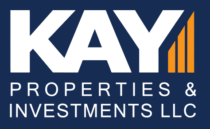Two of the questions that often come up from our clients considering a DST 1031 exchange property are 1) How liquid are DST 1031 properties? and
2) What are the exit strategies?
First off, it is important to note first and foremost that DST 1031 properties are real estate, and like all other types of real estate they are inherently illiquid. You are not buying shares of stock listed on a public exchange that you can sell in 10 seconds by logging into your online brokerage account. This is a fractional beneficial interest in a trust that owns a large piece of illiquid real estate. Investors should be able and willing to hold their investment in a DST 1031 property for the full life of the program, which could last for seven to ten years or even longer.
That being said, we have heard of investors selling their DST 1031 interest in a property before. One of the main issues is finding another buyer and agreeing on a price. Typically, if an investor wants to sell their interest in a DST 1031 property, the sponsor will send a letter to all of the other DST investors in the property notifying them that a fellow investor wants to exit their interest in the property.
There is no guarantee that an investor will be able to find another investor that wants to buy his or her DST interest and that they will be able to agree to a price. Therefore, DST 1031 properties again are to be considered illiquid investments and should only be purchased if an investor is able and willing to hold the investment for the full life of the DST offering.
“Full Cycle” is a term used to describe a DST property that is purchased on behalf of investors and then after a period of time is sold on behalf of investors.
The second question is “What is the exit strategy?” This answer is always unknown until a particular DST actually goes “full cycle.” Full cycle is a term used to describe a DST property that is purchased on behalf of investors and then after a period of time is sold on behalf of investors. The following are various exit strategies that could potentially take place; please note that this is not an exhaustive list of potential exit strategies but merely a list of examples for illustration purposes only. Please also note that exit strategies are not guaranteed:
- A Real Estate Investment Trust (REIT) purchases the DST property.
- A large institution, such as a pension fund or foreign investor, purchases the DST property.
- Another real estate company on behalf of their investors purchases the DST property.
- An ultra-high net worth buyer will purchase the DST property via a 1031 exchange or as an outright purchase.
- The investors in a DST property are potentially given an option to utilize the Section 721 exchange to exchange into a larger portfolio of properties (such as a REIT) on a tax-deferred basis.
All real estate contains risk. Please read the full private placement memorandum for a discussion of each property’s business plan and risk factors. There are no guarantees for projected cash flow and/or appreciation. Please do not invest in real estate offerings if you cannot afford to lose your entire investment principal.

